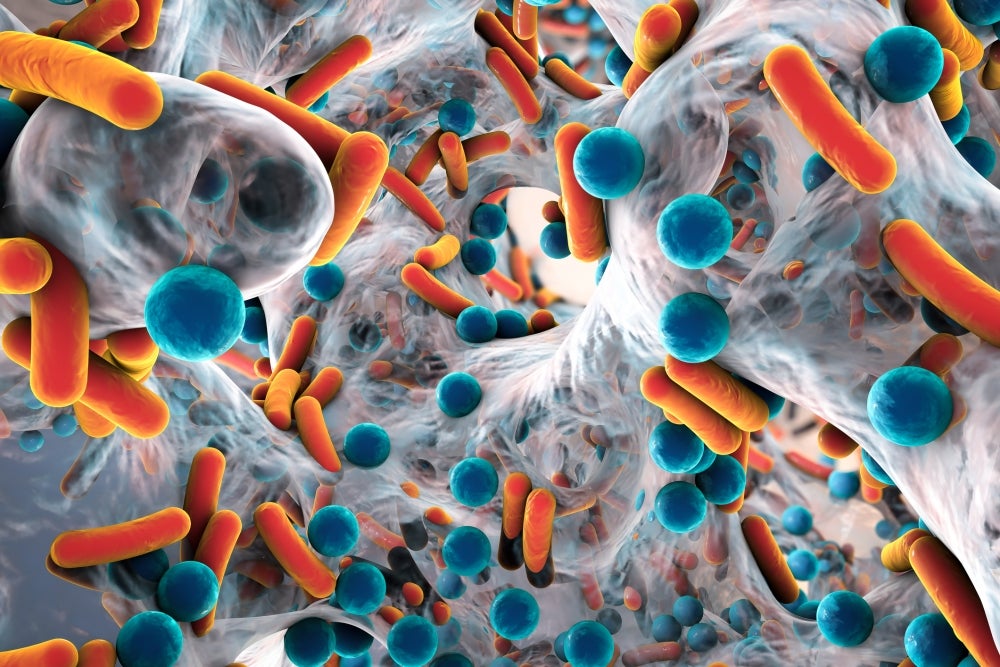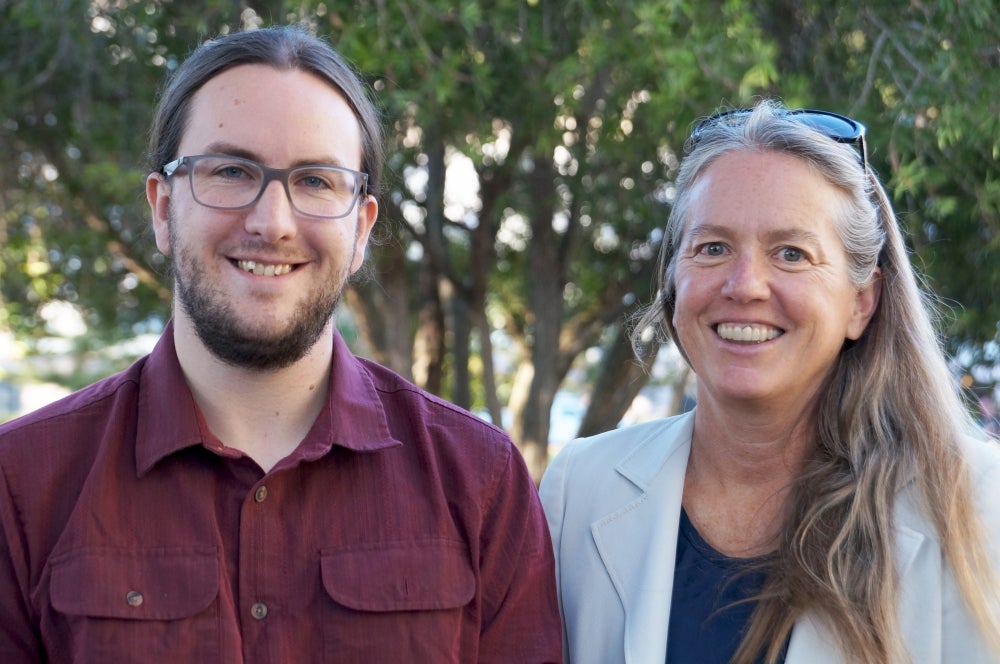
Modeling the Microbiome

The gut microbiome — the world of microbes that inhabit the human intestinal tract — has captured the interest of scientists and clinicians for its critical role in health. However, parsing which of those microbes are responsible for effects on our wellbeing remains a mystery.
Taking us one step closer to solving this puzzle, UC Santa Barbara physicists Eric Jones and Jean Carlson have developed a mathematical approach to analyze and model interactions between gut bacteria in fruit flies. This method could lead to a more sophisticated understanding of the complex interactions between human gut microbes.
Their finding appear in the Proceedings of the National Academy of Sciences.
“Especially over the past 20 years or so, scientists have been finding that the microbiome interacts with the rest of your body, with your immune system, with your brain,” said Jones, a graduate student researcher in Carlson’s lab. “Many diseases are associated with certain microbial compositions in the gut.”
The human gut microbiome as yet is too diverse to fully analyze. Instead, the research team, led by Carnegie Institution for Science biologist Will Ludington, used the fruit fly as a model organism to tease apart how the presence of particular gut bacteria could lead to physical and behavioral effects in the host organism.
In their paper, “Microbiome interactions shape host fitness,” Carlson, Jones, Ludington and colleagues examine the interactions between five core species of bacteria found in the fly gut, and calculate how the presence or absence of individual species influences aspects of the fly’s fitness, including lifespan, fertility and development. “The classic way we think about bacterial species is in a black-and-white context as agents of disease — either you have it or you don’t,” Ludington said. “Our work shows that isn’t the case for the microbiome. The effects of a particular species depend on the context of which other species are also present.”
Building on previous research that found the presence versus the absence of bacteria affected the longevity of an organism (sterile hosts lived longer), the researchers’ work on this project revealed that the situation is far more nuanced. For example, the presence of certain bacteria might increase the host’s fecundity, while others might decrease longevity. “As we examined the total of what we call a fly’s fitness — it’s chances of surviving and creating offspring — we found that there was a tradeoff between having a short lifespan with lots of offspring, versus having a long lifespan with few offspring,” Ludington explained. “This tradeoff was mediated by microbiome interactions.”
To decipher these interactions, Ludington performed a combinatorial assay, rearing 32 batches of flies each inhabited by a unique combination of the five bacteria. For each bacterial combination, Ludington measured the fly’s development, fecundity and longevity. The analysis of the interactions required Carlson and Jones to develop new mathematical approaches.
“One model that often would be a starting point would be to consider the interactions between pairs of bacteria,” said Carlson, whose research delves into the physics of complex systems. “This research shows us that a strictly pairwise model does not capture all of the observed fly traits.”
What the study shows, the researchers said, is that the interactions between the bacterial populations are as significant to the host’s overall fitness as their presence — the microbiome’s influence cannot be solely attributed to the presence or absence of individual species. “In a sense,” said Jones, “the microbiome’s influence on the host is more than the sum of its parts.”
The newly developed models could be extended to better understand the interactions of the thousands of different species of bacteria in the human microbiome, which could, in turn, shed light on the many connections to microbiome-affiliated diseases including mood disorders, neurological dysfunctions, autoimmune diseases and antibiotic-resistant superbugs.
“In many cases infections are caused by bacteria that we all have in ourselves all the time, and are kept in check by native gut bacteria,” Carlson said. It’s not so much that the infection is some new, horrible bacteria, she explained, but that the populations of other bacteria have changed, resulting in unrestricted growth for the infectious bacteria.
“It’s really about understanding the population dynamics of these systems,” she said.
Research on this study was also conducted by Alison Gould, Vivian Zhang and Benjamin Obadia of UC Berkeley; Lisa Lamberti, Nikolaos Korasidis and Niko Beerenwinkel of ETH Zurich; and Alex Gavryushkin of University of Otago.



